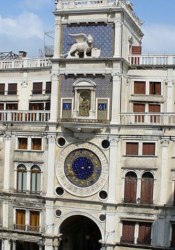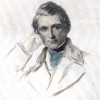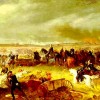Venice
Venice is a city in the northeast of Italy, spread across 118 islands in the Venetian Lagoon. Until the eighteenth century, it was the capital of the Republic of Venice; it is now the capital city of the Veneto region. During the Middle Ages and the Renaissance, the Republic of Venice was a major maritime power and a financial center. During the Italian Renaissance, Venice was one of the most important cultural centers, along with Florence and Rome. Famous Venetians include Antonio Vivaldi, Marco Polo, and Giacomo Casanova. Venice features prominently in Shakespeare’s “Othello” and “The Merchant of Venice,” Henry James’s The Wings of the Dove, and Evelyn Waugh’s Brideshead Revisited.
Parent Map
Coordinates
Latitude: 45.436985702387
Longitude: 12.336144447327
Longitude: 12.336144447327



